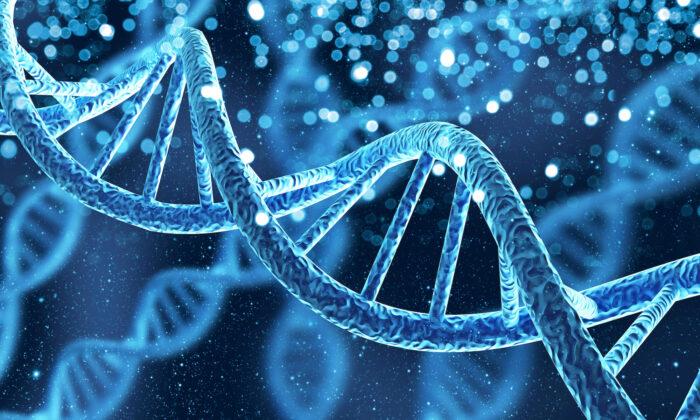Tech companies hire rooms full of highly intelligent people to figure out how best to design their product to exploit the features of your brain’s reward systems.
Their mission is to cause habitual addictive behavior. This process is called reward prediction error (RPE) encoding and features a neurotransmitter called dopamine.
In a 2018 interview, Chamath Palihapitiya, the former VP of Facebook responsible for user growth, spoke on dopamine feedback loops that he regrettably helped develop for the social media platform.
“The short-term, dopamine-driven feedback loops that we have created are destroying how society works. Social media companies are exploiting the psychology of people for making a profit,” he said.
What Are Dopamine Feedback Loops?
A dopamine feedback loop works similarly to the method that casino owners use for slot machines. If you’ve ever played slots, you’ve experienced the rush of anticipation while the wheel spins. The moments between the lever pull and the outcome gives time for the dopaminergic neurons of the midbrain to increase their activity, creating a rewarding charge with each pull.In the same manner, social media companies have created a similar action, anticipation, and reward loop. The action: scrolling, writing, sharing, posting, or commenting. Anticipation: finding a new exciting piece of content or waiting for a like or comment. And the reward is receiving one of the latter.
If you’ve ever posted on a social media site or other apps just for the sake of getting likes or comments or have opened an app to look at the first post and then swipe to see what comes next, before you knew it 15 minutes had gone by, then you’ve experienced a dopamine feedback loop.
Dangers of Dopamine Feedback Loops
The dopamine-driven feedback loops will cause your neurons to dump an excess of dopamine into your system making you feel good initially. The problem is that when this happens, our brains compensate for this dopamine dump by seeking equilibrium by pushing our dopamine levels below baseline, causing us to go into a dopamine deficit state.The symptoms of a dopamine deficiency can cause depression, hopelessness, anxiety, and more. These man-made dopamine-driven feedback loops mimic exactly how people become addicted to drugs and can cause individuals to become trapped in a vicious chemically imbalanced cycle of highs and lows.
Our smartphones can be a helpful asset or a modern-day hypodermic needle, delivering digital dopamine 24/7 to a chemically imbalanced generation. The reality is, in the age of technology it’s almost impossible to go about life and not use a smartphone or computer. For many—especially young people—social media is a preoccupation and compulsive form of entertainment. We need technology, but it’s also important to understand, mitigate, and minimize the negative effects it has on our minds and bodies. So how do we take back control and find balance?
Know When You Have a Problem
“You might be able to tell you’re in a dopamine deficit state when you’re scrolling through social media, and you feel like you can’t stop,“ Dr. Anna Lembke wrote in her book ”Dopamine Nation: Finding Balance in the Age of Indulgence.““It doesn’t necessarily feel good, and you aren’t getting anything from your actions, but you just keep scrolling. When we’re in a dopamine deficit, it can feel similar to depression and anxiety,” she wrote.
Other signs of technology addiction can include:
- Getting less sleep due to technology or internet activities
- Compulsively checking text messages or notifications
- Losing interest in aspects of your life that don’t involve the internet or technology
- Feeling guilty or getting defensive about the time we spend online
- Turning to the internet or a technology-enabled device to improve your mood, or experience pleasure, relief, or sexual gratification
- Trying but failing to cut back on internet or technology use
Symptoms of Dopamine Deficiency
A blood test can measure dopamine levels but can’t determine how your brain responds to dopamine. Therefore, doctors rely on symptoms in addition to testing. Some of the symptoms are:- You’re depressed; you feel hopeless.
- You’re moody or anxious.
- You don’t feel pleasure from previously enjoyable experiences.
- You can’t concentrate.
- You have trouble sleeping or have disturbed sleep.
- You have a low sex drive.
- You’re tired.
- You lack motivation and drive.
- You have gastrointestinal symptoms, including chronic constipation.
Rebalancing Our Dopamine
If we feel we’ve lost control of our impulses and find ourselves experiencing addiction and low dopamine levels, it’s important to first break the cycle.Start with a dopamine fast: Take a 30-day break. Cut out the addictive behavior entirely at first, and then re-introduce it in moderation. This will help get your pleasure-pain balance back in check.
Turn off all phone notifications: Every notification, whether it’s a text message, a “like” on Instagram, or a Facebook notification, has the potential to be a positive social stimulus and dopamine influx.
Change your phone screen to grayscale: Colors draw our attention, and certain ones can cause dopamine release. Findings show the colors green and blue are on top of the list of all colors for enhancing the concentration of dopamine. (Notice the blue themes of Twitter, LinkedIn, and Facebook)
Create a counter-movement: This is a physical movement you do that becomes its own conditioned response. For example when you realize you’re endlessly scrolling in a dopamine loop, immediately press the home button and place the phone face-side down. A counter-movement becomes a conditioned response you can use to break the dopamine-seeking-reward loop once it has started.
A Dopamine Diet
When we’re trying to get our dopamine back, some foods and lifestyle choices can help us naturally increase dopamine levels.Eat a “real food” diet that’s high in magnesium and tyrosine. These are the building blocks of dopamine synthesis. Tyrosine is an amino acid that is converted into dopamine when we eat it. Also, avoid processed sugar. Sugar is an anti-nutrient that affects and disrupts all neurological pathways.
Foods known to increase dopamine include chicken, almonds, apples, avocados, bananas, beets, chocolate, green leafy vegetables, green tea, lima beans, oatmeal, oranges, peas, sesame and pumpkin seeds, tomatoes, turmeric, watermelon and wheat germ, Brazil nuts.
Fermented foods are high in natural probiotics. Maintaining a healthy balance of beneficial microbiota in the gut biome directly influences brain health and affects mood.
Dopamine Increasing Activities
Cold Showers: Cold showers are shown to increase dopamine concentrations.Exercise: Exercise boosts the production of new brain cells, increasing levels of dopamine, serotonin, and norepinephrine.
Sunlight: Sunlight increases the number of dopamine receptors, whilst the synthesis of ultraviolet rays to vitamin D activates the genes that release dopamine.
Sleep: Sleep begets dopamine sensitivity. And a lack of sleep reduces the number of dopamine receptors. Dopamine also controls the production and release of the sleep hormone melatonin.
Gut Health: The health of your intestinal flora directly impacts the production of neurotransmitters. An overabundance of bad bacteria creates toxic by-products which destroy the brain cells responsible for dopamine production.
Yoga, Meditation, and Music: These activities reduce cortisol production and enhance the production and secretion of dopamine.
Sources
Views expressed in this article are the opinions of the author and do not necessarily reflect the views of The Epoch Times. Epoch Health welcomes professional discussion and friendly debate. To submit an opinion piece, please follow these guidelines and submit through our form here.





